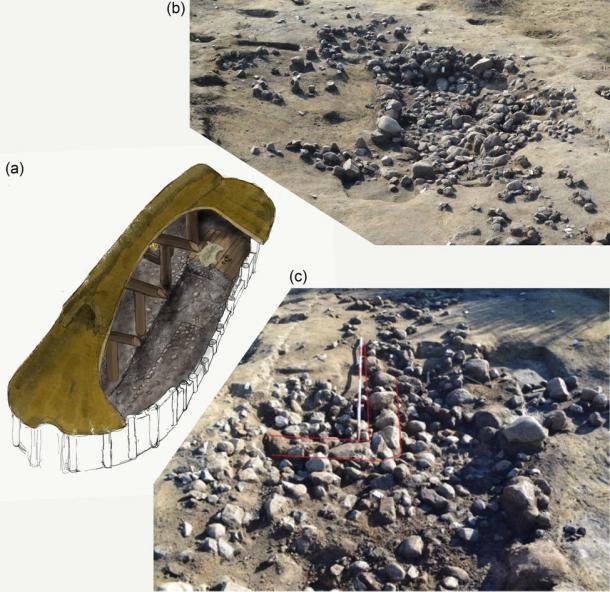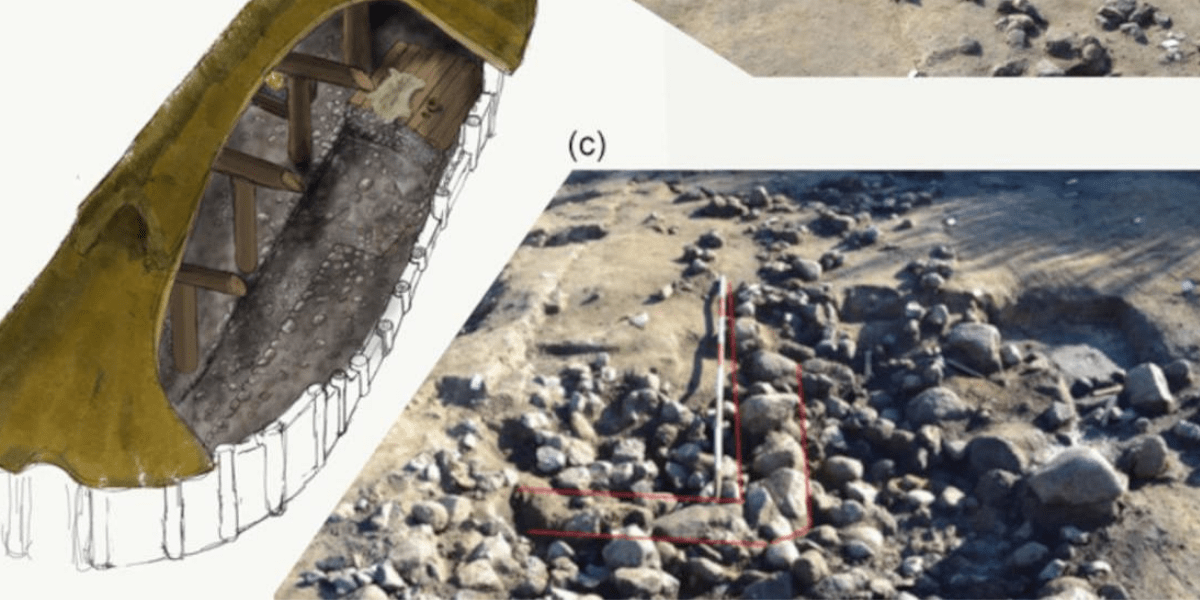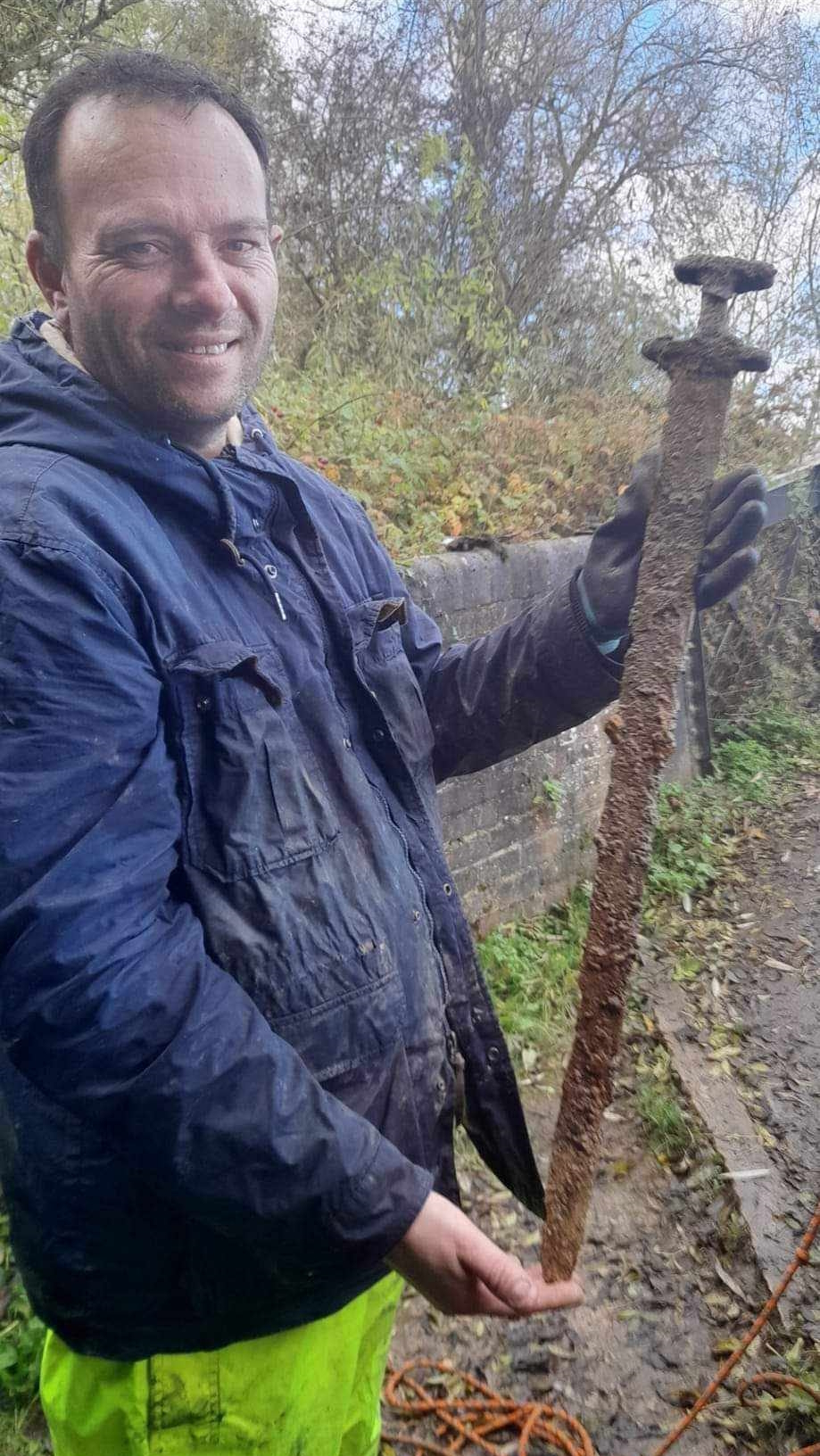A 5,000-year-old stone-paved cellar has been discovered during the excavation of a Neolithic dwelling on Falster Island in Denmark.
The cellar was uncovered during the construction of a railway passing through a farm on Falster Island. The stone-paved root cellar measures approximately 6.5 feet by 5 feet; while it may not be large in size, it could be historically significant.
The stone-paved cellar dates back to the Middle Neolithic period.
Archaeological researchers from the Lolland-Falster Museum, in collaboration with Aarhus University in Denmark, analyzed the site in a paper published online in the journal Radiocarbon.
The initial transition to agriculture and the domestication of animals such as sheep, goats, and cattle in the Scandinavian region took place around 6,000 years ago with the emergence of the Funnel Beaker Culture, leading to a more settled lifestyle.
This shift prompted the construction of houses, megalithic tombs (dolmens), and other structures that transformed the landscape, representing a notable change from the highly mobile hunter-gatherer practices of the Late Mesolithic.
The research team identified two phases of housing construction associated with the Funnel Beaker Culture dating back to the early Neolithic period, with the pebble-stone-lined cellar located beneath one of these structures.

Both structures were built using a common Funnel Beaker Culture design (the Mossby-type), where interior posts provide support for a large double-span roof. Phase one included 38 post holes, while phase two had 35, indicating that a significant amount of architectural planning was involved.
The fact that the site is situated on an elevated area of land and is not close to any bogs or streams suggests that care was taken. It would have been advantageous from a defensive as well as practical standpoint because it offered the benefits of being above flood zones and offering a broad view of the surrounding area.
More than a thousand artifacts were discovered in and around the houses, offering more insight into daily life in Neolithic Denmark. These artifacts included fossilized sea urchins, pottery fragments, and flint tools.
“The presence of this paved cellar challenges our understanding of the construction capabilities of Neolithic societies,” the authors wrote. “It forces us to reconsider the complexity of their domestic structures and, by extension, their social organization.”
The discovery of a stone-paved, underground structure that is thought to be a root cellar is the site’s most noteworthy feature. While the use of such cellars is well documented in later periods, this is the first known example from Neolithic Denmark. This would be a major technological advance for food storage in the area if it is indeed a root cellar.
Root cellars are the perfect place to store food because of their constant temperature because they are underground. In an agricultural society, this would have been needed for preserving crops and other resources through harsh winters and between harvests. A technological advance in resource management during the Neolithic era, food preservation of this kind would have substantially improved the inhabitants’ chances of survival.
The discovery changing the narrative about the people, who were thought to be highly primitive at the time. “The discovery forces us to reevaluate our assumptions about the technological capabilities of Neolithic societies,” the authors wrote. “The presence of a paved cellar implies not only advanced construction skills but also long-term planning and a sophisticated understanding of storage and food preservation.” This insight could redefine the social fabric of the Stone Age.
DOI: https://doi.org/10.1017/RDC.2024.79
Cover Image Credit: Radiocarbon (2024).
















